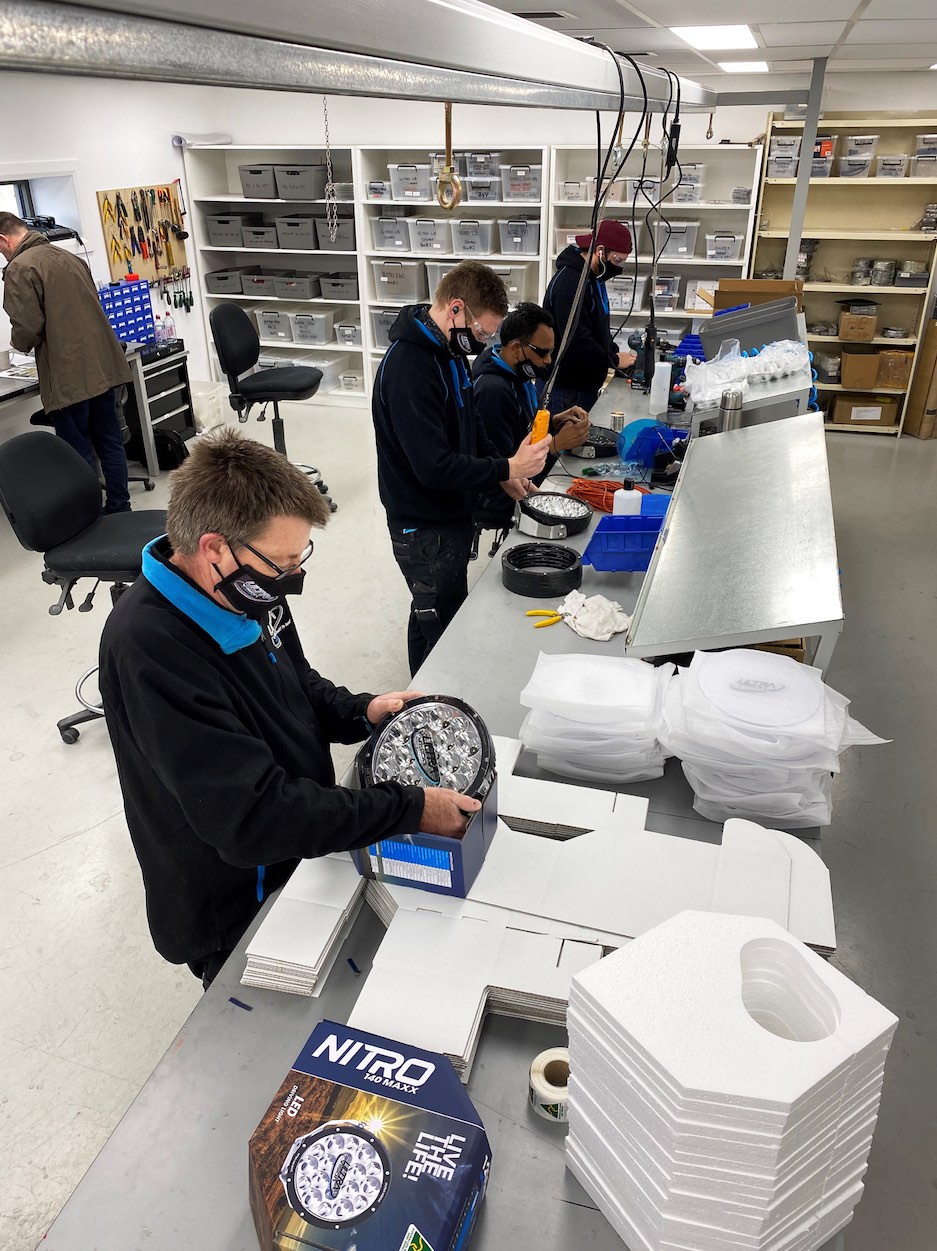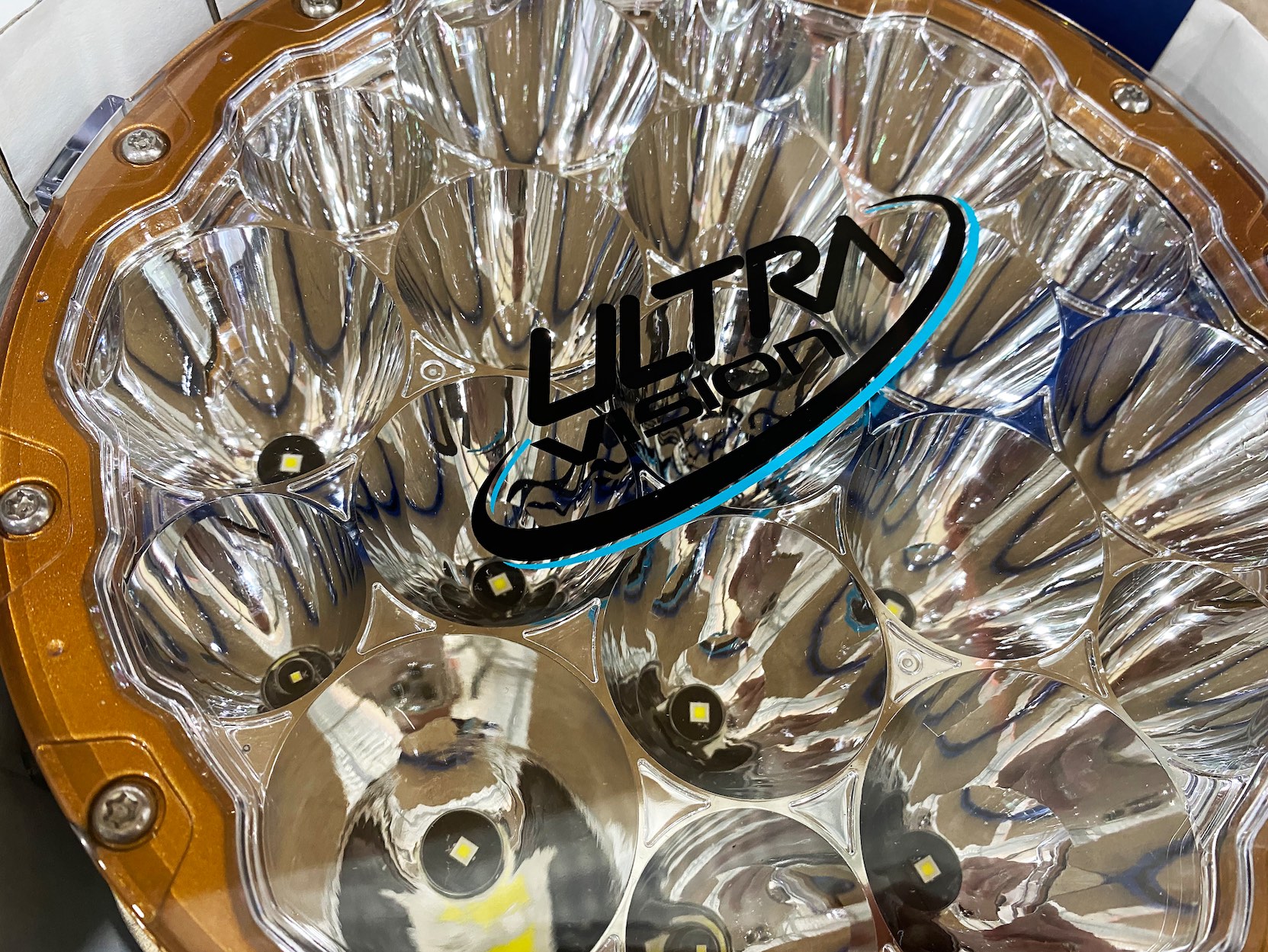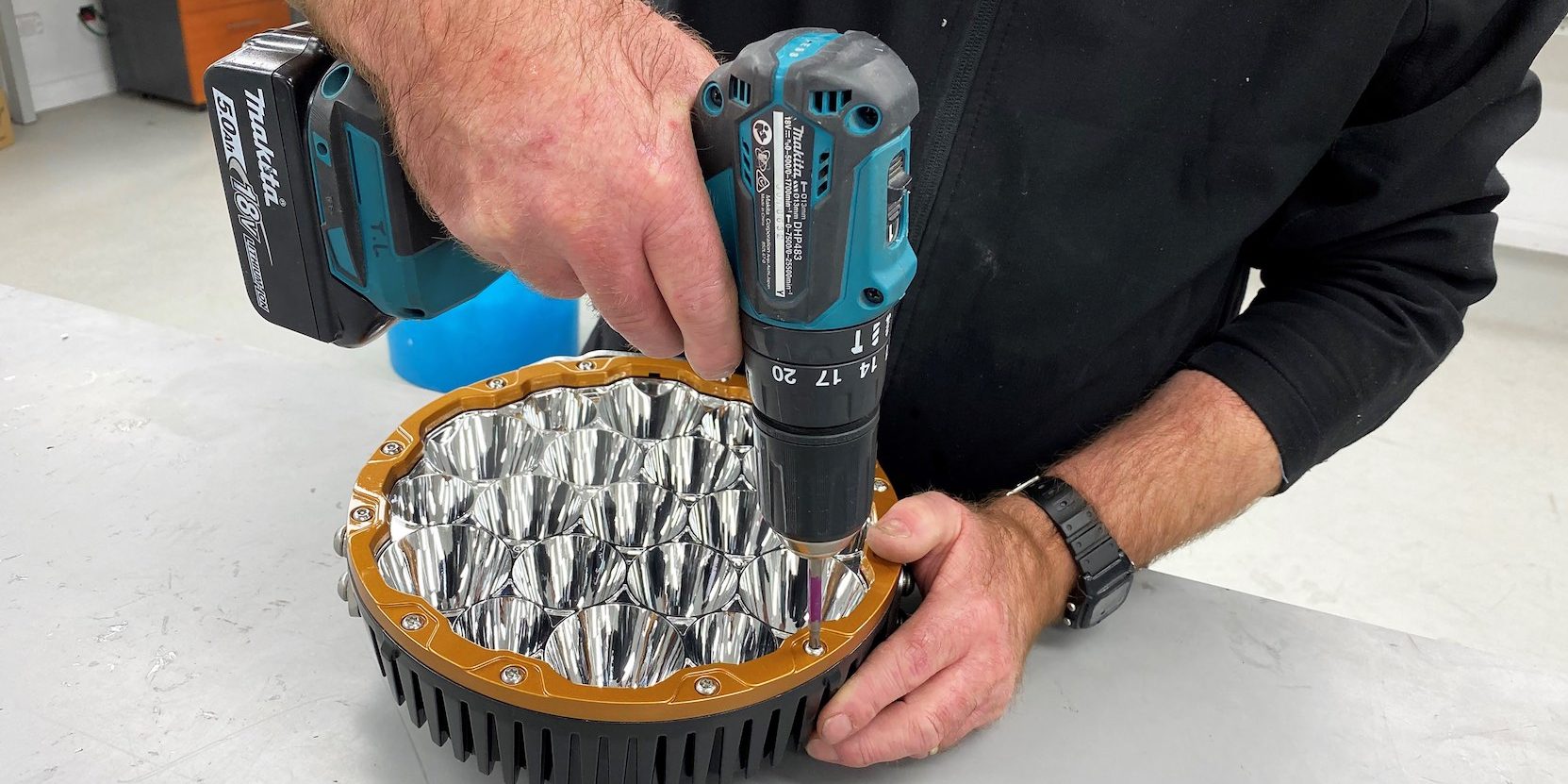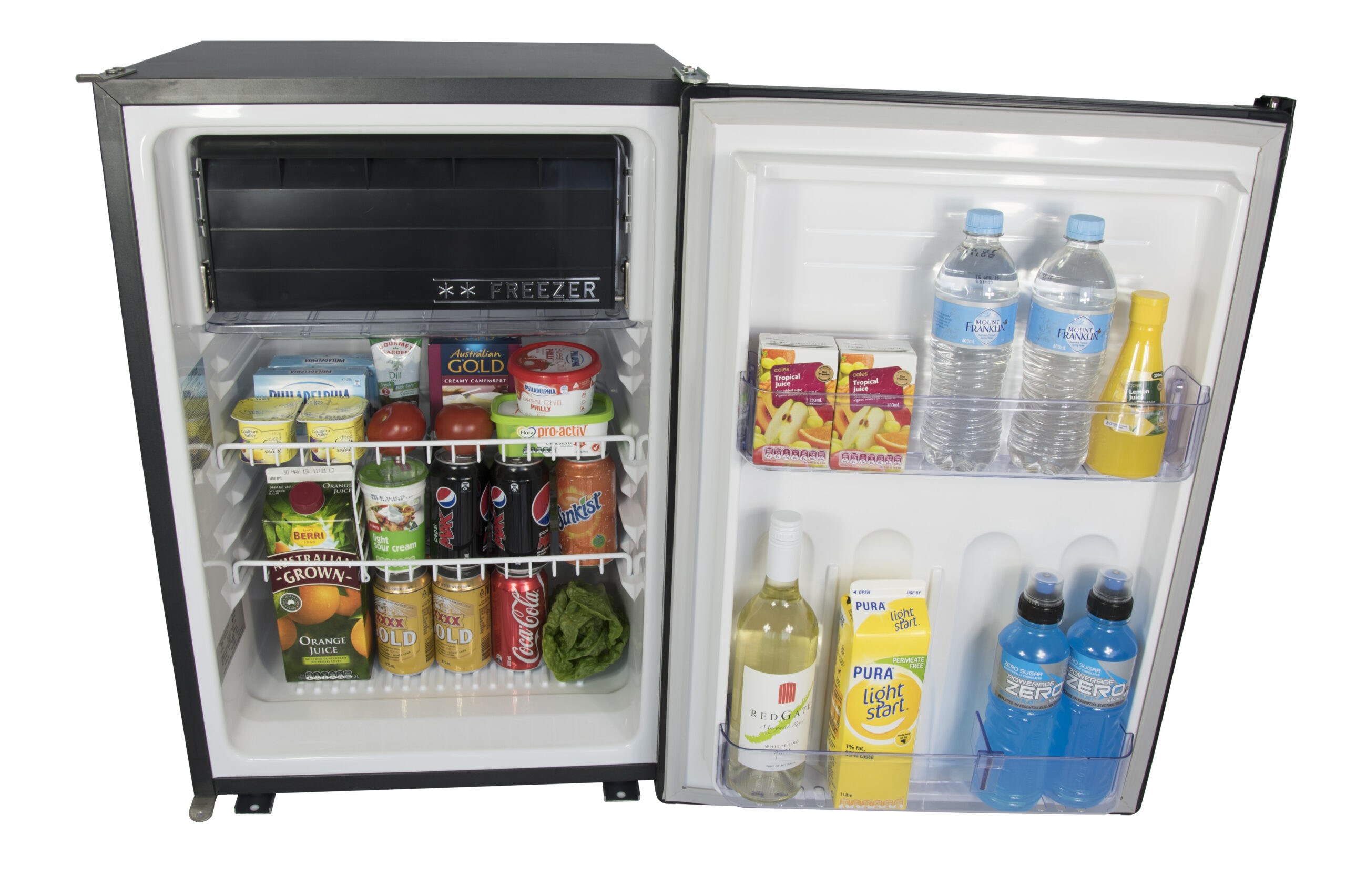An in-depth interview with Terry Jurgens, the man behind Aussie driving light manufacturer Ultra Vision Lighting.
Yes, we do make some 4X4 accessories in Australia still, including Ultra Vision Lighting products. We sit down with Terry Jurgens to learn a bit more about this Aussie manufacturing story.
Unsealed 4X4: How did Ultra Vision come about? Tell us about the company’s history?
Terry Jurgens: Ultra Vision Lighting began as a father/son partnership in 2004 with my dad Owen and I importing and distributing cosmetic aftermarket lighting for vehicles. In 2007, we saw a gap in the market in Australia for high-performance, cost-effective HID driving lights and Ultra Vision was created. By 2010 higher-performing LED diodes were starting to become available and within 12 months we were manufacturing our first heavy-duty work lamp for the mining industry.
We purchased our first LED pick-and-place machine in 2014, and soon after our first LED driving light hit the market – the original Nitro 80 Maxx. In the years since, we have grown as LED technology has evolved, consistently working on innovation and priding ourselves on creating the highest performing lighting in our industry in Australia. Our Nitro 120 Maxx was the first driving light worldwide to reach 1 lux at 1km, our Nitro 140 Maxx was the first driving light to reach 1 lux at 1.2km, and now our Nitro 180 Maxx sets the benchmark at 1.8km.

U4X4: The Ultra Vision range is made right here in Australia – in Swan Hill, Victoria to be exact. What goes into manufacturing lights in Australia?
TG: Ultra Vision lights are proudly hand-built by our dedicated knowledgeable team here in Swan Hill, Victoria. We love that by setting up a business here, we are not only supporting the local community, but also keeping jobs in Australia. All our products are designed and built from the ground up, from concept to reality. Our purpose-built premises in Swan Hill allows us to manufacture lighting to the highest standards and ensure quality control from the beginning of the build right down to the final customer experience.
Our housings are always designed to create maximum cooling whilst maintaining a lightweight, sleek appearance. We use the highest grade of high-pressure die-cast aluminium with the lowest copper content to ensure longevity. We believe the soul of any quality light is the PCB (printed circuit board). We only utilise 1.6 solid aluminium PCB substrates, in conjunction with our own automated SMT (Surface Mount Technology) machinery which allows us to fully control the quality of every component we use in our lights. Ultra Vision lights are a cut above the rest thanks to our in-depth knowledge of reflectors and optics which are developed and manufactured for ultimate performance.
U4X4: What mistakes do you see when people are choosing lights? Is there a common theme you’re seeing, or your dealers are seeing, when dealing with four-wheel drivers?
TG: The most common mistake we see is that consumers don’t consider the value of the product they are purchasing; cheaper lights are not going to deliver the same performance and quality over a long period of time. Your vehicle, as well as a high-quality bull bar, are considered long-term investments; we believe that lighting should be given the same consideration.
Another common mistake is that a set of lights will be purchased on impulse, without considering the environments in which they are going to be mostly used. For example, a light with a more directional beam is not going to be the best for thick bush tracks where a wide beam would be more appropriate.

U4X4: What standout features do Ultra Vision lights offer that make them among the best lights in the industry?
TG: Ultra Vision Lighting uses the highest-grade electronic components. We use the highest BIN grade of LEDs available from the manufacturer, giving our lights the best possible brightness and beam colour consistency. Our sophisticated ‘Contrl Optic’ gives the Nitro range maximum distance while the design-registered WIDR optic gives maximum width. The combination of these two optics gives you ultimate beam performance.
Another standout feature of Ultra Vision lights is the high-grade stainless-steel mounting brackets which are TIG welded for maximum strength and endurance in any environment. Our signature driving light, the Nitro 180 Maxx, has an amazing light output of 1.8km and dedicated Hi/Lo feature. Our light bars are incredibly versatile, giving great beam distance and width, making them an ideal alternative to driving lights. They can also be used in conjunction with our driving lights for the ultimate on- and off-road experience. Another great feature is that all of our lights come standard in 5700k colour temperature, but most are also available in 4000k, which is a softer and more yellow light. The 4000k colour temperature minimises reflection off new road signs, and is more effective at penetrating through fog, smoke and dust.
U4X4: What are the main benefits of the Hi/Lo feature?
TG: Our Hi/Lo feature on the Nitro 180 Maxx driving lights enables the driver to easily reduce the beam power for travel through built-up areas or when approaching traffic that is still a long way in front, with the Hi feature allowing the beam to reach up to 1.8km which is perfect for those long outback drives. The Hi/Lo feature on the Nitro Maxx light bars has been praised not only for output flexibility while driving but is also useful on Low to flood your camp with light whilst setting up.

U4X4: For someone looking to get a new set of lights for long-distance off-road touring, what would you suggest? And, what would you suggest for someone who tackles tighter tracks more so than long-distance/highway driving?
TG: For long-distance off-road touring, you can’t go past our Nitro 180 Maxx or Nitro 140 Maxx driving lights. Their high quality and consistent light output along with their tough construction is the perfect combination for those long trips across the varied Australian landscapes.
Our off-road 4×4 enthusiasts love the combination of any of our driving lights in conjunction with a light bar (mounted on the bull bar or roof rack) for extra beam width. For more coastal and winding roads, our customers tell us you can’t go past our Nitro range of light bars as these give more width than driving lights but still have good straight-line performance.
Our Atom 25 LED work lamps are also very popular amongst all types of outdoor enthusiasts for reverse or side auxiliary lighting of their vehicles. Our Raptor range of driving lights and light bars are an ideal alternative for someone who is more price-conscious, but still wanting excellent quality, Australian-made lighting for their outdoor adventures.
U4X4: What new lighting technologies could be used in auxiliary lighting into the future? What effect could these new technologies have on the Ultra Vision range of driving?
TG:At Ultra Vision lighting we have prided ourselves on being leaders in the lighting industry, and at the forefront of innovation. Whilst LED is still very much a current lighting source, Laser lighting technology will be the future in performance lighting. Whilst Lasers have been available for many years, a white laser source has only recently been made possible. As this new Laser technology is in its infancy, it still has drawbacks in being that it is very expensive, dangerous and not easily controllable. The lifespan of current Laser lighting doesn’t match that of LEDs. Ultra Vision has already thoroughly explored Laser technology, however we have decided to wait until it is more commercially viable. Whist the beam had great distance, it had no spread at all, creating significant limitations for its use.
Ultra Vision is always exploring the possibilities of pushing the boundaries of LEDs, and has discovered a way of making LED technology out-perform current Laser technology.










